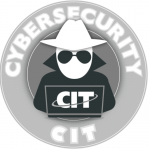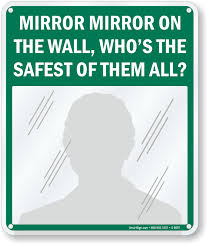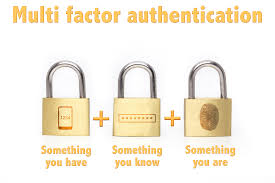See our Wednesday and Friday post. This is for everyone I ever met who can’t remember their passwords. You know who you are. Check the logo on St. Peter’s laptop. Looks like you will need an iCloud Keychain.
Continue Reading →DEC
See our Wednesday and Friday post. This is for everyone I ever met who can’t remember their passwords. You know who you are. Check the logo on St. Peter’s laptop. Looks like you will need an iCloud Keychain.
Continue Reading → On Wednesday, we looked at the built-in password manager provided by Google Smart Lock. Today we will review Apple’s iCloud Keychain. Keychain works automatically with iPhones, iPads, and Macs, and is shared an updated to all your devices automatically. Most of the Apple users I talk to are familiar with Keychain. Keychain works with devices that are ...
On Wednesday, we looked at the built-in password manager provided by Google Smart Lock. Today we will review Apple’s iCloud Keychain. Keychain works automatically with iPhones, iPads, and Macs, and is shared an updated to all your devices automatically. Most of the Apple users I talk to are familiar with Keychain. Keychain works with devices that are ...
 A quick Saturday digest of cybersecurity news articles from other sources.
A quick Saturday digest of cybersecurity news articles from other sources.11/16/2017 04:52 PM EST Original release date: November 16, 2017
The Internet of Things refers to any object or device that sends and receives data automatically through the Internet. This rapidly expanding set of “things” includes tags (also known as labels or chips that automatically track objects), sensors, and devices that interact with people and share ...
Continue Reading → Over the last four posts, we have focused on the US-CERT alert, but cybersecurity firm Symantec has actually been working this case since 2011. Their report on Dragonfly can be found on their website. While they are cautous when providing attribution, reading between the lines indicates that Dragonfly is probably a Russian based group, possibly working on ...
Over the last four posts, we have focused on the US-CERT alert, but cybersecurity firm Symantec has actually been working this case since 2011. Their report on Dragonfly can be found on their website. While they are cautous when providing attribution, reading between the lines indicates that Dragonfly is probably a Russian based group, possibly working on ...
 Is the U.S. energy sector under attack? The ambitious and sophisticated exploits like this one are usually the work of a nation-state. Who wants to turn off the lights? Last Wednesday we took a look at the US-CERT alert warning about the ongoing cyber-attack against the U.S. electric grid, and on Friday we took a look at many of the ...
Is the U.S. energy sector under attack? The ambitious and sophisticated exploits like this one are usually the work of a nation-state. Who wants to turn off the lights? Last Wednesday we took a look at the US-CERT alert warning about the ongoing cyber-attack against the U.S. electric grid, and on Friday we took a look at many of the ...
 Somebody wants to punch our lights out – literally turn off the electric power grid. Who would want to do this? Russia? North Korea? Cybersecurity firm Symantec has attributed this attack to a group they have identified as the Dragonfly Group, who may have been responsible for the attack on the Ukrainian electric grid in 2015 and ...
Somebody wants to punch our lights out – literally turn off the electric power grid. Who would want to do this? Russia? North Korea? Cybersecurity firm Symantec has attributed this attack to a group they have identified as the Dragonfly Group, who may have been responsible for the attack on the Ukrainian electric grid in 2015 and ...
 That’s right, it’s still you. Sorry.
That’s right, it’s still you. Sorry.
October is Cybersecurity Awareness Month, and this week’s theme is Simple Steps to Online Safety.
The toughest part of cybersecurity is securing the human mind, emotions, behaviors, and responses from the making a decision or taking an action that will open the door for a cyber-attacker. The reality is that it is much easier to secure systems than humans. And unfortunately, humans have been given ...
Continue Reading →The Sophos Naked security blog ran an article in August that was a disappointing revelation about major online brands that allow ridiculously easy user passwords. Just because a web site will permit you to use a bad password, doesn’t mean you should. Our current recommendation is to use passwords of at least 15 characters, and couple that with two-factor authentication at every opportunity.
The password management program Dashlane performed an audit of 37 online brands and rated their ...
Continue Reading → Two-factor and multi-factor authentication are becoming more important and more available as we struggle to secure our information from attackers. These factors are something you know, something you have, and something you are. Biometrics (something you are) are one of the three factors used in computer, network, and application authentication.
Two-factor and multi-factor authentication are becoming more important and more available as we struggle to secure our information from attackers. These factors are something you know, something you have, and something you are. Biometrics (something you are) are one of the three factors used in computer, network, and application authentication.
Biometrics include thumbprint or fingerprint readers, palm scanners, iris and retinal scanners, facial recognition, speech recognition, and even arcane systems that ...
Continue Reading →